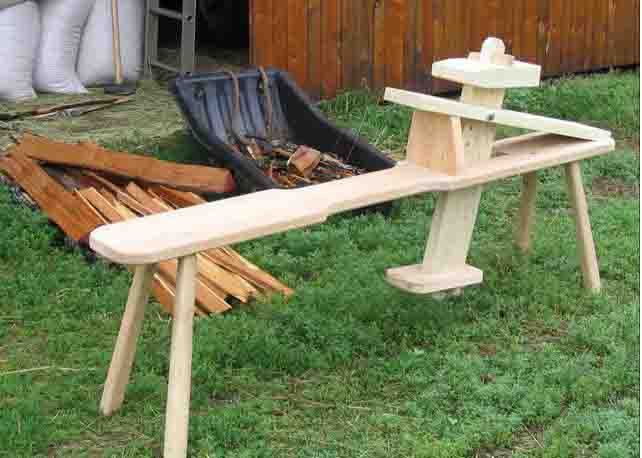Taffy Turner
Established Member
I went to the South Wales Woodfest at Margam Park on Sunday for a look around. It was OK - nothing marvelous, but worth the £6 entry.
Whilst looking at the Classic Handtools stall, my eye was taken by a rather nice drawknife, which now has a new home in my workshop. I can't read the makers name, but it looks older than me! The blade is in good condition, with no pits or dings in the edge, and the steel is a hard as old boots - my honing stone doesn't make much of an impression on it.
The blade is in good condition, with no pits or dings in the edge, and the steel is a hard as old boots - my honing stone doesn't make much of an impression on it.
The main reason for purchasing this fierce looking weapon was for de-barking timber (I am fed up with my left hand being flayed alive while trying to remove bark on the lathe) and for cutting tenons for some rustic furniture that I plan on building at some point. I had a quick dabble with it yesterday, with mixed success. :?
Does anyone have any pointers to successful drawknifing? For example, is it supposed to be used bevel up, or bevel down. Bevel up seems much more aggressive, whereas bevel down seemes to give more control.
All advice gratefully received.
Gary
Whilst looking at the Classic Handtools stall, my eye was taken by a rather nice drawknife, which now has a new home in my workshop. I can't read the makers name, but it looks older than me!
The main reason for purchasing this fierce looking weapon was for de-barking timber (I am fed up with my left hand being flayed alive while trying to remove bark on the lathe) and for cutting tenons for some rustic furniture that I plan on building at some point. I had a quick dabble with it yesterday, with mixed success. :?
Does anyone have any pointers to successful drawknifing? For example, is it supposed to be used bevel up, or bevel down. Bevel up seems much more aggressive, whereas bevel down seemes to give more control.
All advice gratefully received.
Gary


































